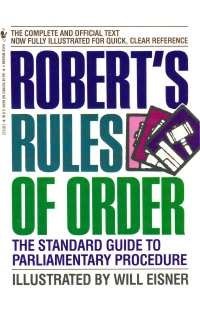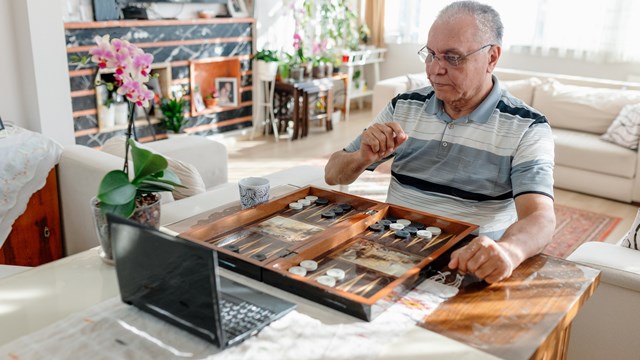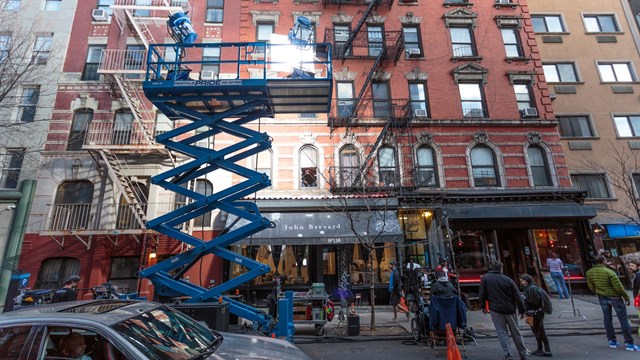
Many association board members and shareholders alike come to dread the monthly board meeting or annual shareholders meeting - stories abound of meetings dragging on for hours, with participants feeling that they're trapped in a vortex of wasted time.
Dysfunctional board meetings can be especially intimidating (not to mention demoralizing) for brand-new board members just figuring things out. The New Jersey Cooperator surveyed a few property managers to find out how boards can improve the quality and productivity of their meetings, so that board members and shareholders feel a sense of engagement.
The All Important Agenda
"My biggest piece of advice is to make sure the meeting revolves around the agenda," recommends Jennifer Ward, administrator for Twin Rivers Community in East Windsor, New Jersey. "The board president - not the manager - facilitates the meeting around the agenda."
Ward suggests a process in which the manager collaborates with the board president to compile and organize the agenda's information. In addition, she contacts other board members for input. She also attempts to get committee reports and new business in writing, ahead of time. All the collected information is then compiled in a packet distributed to board members, the board attorney and recording secretary five days in advance of the meeting. A copy of the agenda is also posted in the office for all residents to read.
"This way I can field questions ahead of time," explains Ward. "So that during the meeting, the board can conduct the business of the association."
One of the most common problems of how the business of the association can be interrupted in a meeting is by "analyzing things to death," according to Chip Hoever of Somerset Management Group LLC in Somerset. "We sometimes make a $100,000 decision in 42 seconds, but whether or not to spend $1.50 goes on ad nauseam." Hoever takes the direct approach in these matters, recommending that boards "keep things in perspective, make a decision and move on."
Hoever also recalls meetings during which members begin jumping around to random items on the agenda. While it's an annoyance, Hoever says it's important that the item-jumper doesn't feel they're being silenced.
Other times, a conversation may be on-item, but discussion has derailed into a tangent. Bob Gillenberger, a property manager with RJ Development in Cranberry Township, Pennsylvania, acknowledges that "it's really tough when people get upset when you cut them off. They feel they're not being acknowledged. But you can only go so far with one issue."
A better way, says Ward, is to table the item and gather information to be brought up at a later meeting.
For Ward, it goes beyond just sticking to the agenda - it's about having all the facts ahead of time so the meeting can be used to make a real decision, instead of debating an issue from scratch. "The important question," says Ward, "is whether there is adequate preparation to make a ruling." She provides an example in which a resident comes to a meeting and announces that they want to cut down the tree outside their window. "The board is not in the position to make a ruling on this request," she explains. "This could turn into a two-hour discussion about a tree."
Ward said the proper course is to discuss the issue with her first. She will then send out the grounds committee to photograph the tree and prepare a report on the tree's health. A contractor will also be contacted. Once the information is gathered, Ward will work with the board president to include it on the agenda. "The situation might be that we say, 'This is a healthy, landscaped tree and should not be removed, but please allocate $100 for a trimming away from the resident's window.' That's how I like things to happen: the proper information in place to make a good decision."
Quiet in the Back!
When members get chatty, Hoever reminds them that they're there to do corporation business. He lets them know he appreciates their camaraderie, but to "save the socializing until after the meeting."
Arguably worse than a meeting that's turned into a coffee klatch is a meeting that's turned combative.
Ward is adamant that "hostile issues need to be tabled." She believes that an open shareholder meeting isn't the place to address a hot issue, particularly a resident issue. It's a place to make decisions," she elaborates.
"The meeting should be about anything that pertains to the association," not private grievances, agrees Hoever. During the open session, he handles the business of the corporation, such as shared-space issues like landscaping and wall painting, or amendments to the association's governing documents. Private matters are held in the closed executive meeting; this includes litigation and arrears collection issues.
And if the matter at hand is frivolous? "Let them say their piece. Let them say, 'I don't like the color of my neighbor's wall.' Then move the meeting on."
Gillenberger says that "one should never discuss delinquent accounts or personal information" in an open meeting. He adds that it's not so much an issue of secrecy, but making sure personal errors and conflicts are resolved prior to presenting them in a public meeting.
Rules and Guidelines
In larger buildings, there may be a problem of individual shareholders or residents not getting the chance to speak but it's important that everyone has an opportunity to have their viewpoints and suggestions heard.
All three managers spoken to - Hoever, Gillenberger and Ward - recommend using a more relaxed, pared-down version of Robert's Rules of Order to keep meetings focused and on-track. Robert's Rules are a set of guidelines adapted by Henry Martyn Robert from parliamentary law, intended to be used during an organization's deliberative assembly.
"I recommend that you follow them informally, keeping them as a guide," says Hoever. "Some of our meetings aren't large enough, and the issues not critical enough [to require the full Robert's Rules treatment.]" He explained that in some of his meetings, there may be three homeowners in front of a five-member board.
Ward agrees that a less-strict tone within a framework of order prevents a cacophony of voices. "There should be motions made and seconded," he says, "and an oral roll call should be taken, especially with the new legislation in states regarding [a minimum amount of] resident attendance and participation."
Hoever adds that participation is crucial, as members have so precious little time. "A meeting should be orderly and not a free-for-all, but there should be enough flexibility that everyone feels engaged."
The managers recommend that committee meetings be run in a similarly relaxed manner - and say that managers themselves don't necessarily have to attend every single ad hoc meeting held in a given association. Committees like Architectural Control, Safer Streets, Budget and Finance, as well as special projects like renovations can do their jobs without constant oversight by management - but managers should be available, should their input be needed.
After the committee meetings are held, Ward encourages committee chairs to submit written reports before the board meeting, rather than giving lengthy oral reports at the meeting itself.
The Manager's Role
According to the three managers, the suggested length of a meeting is dependent on the issues on the table. The ideal is 60 to 90 minutes, but the reality tends to be closer to two hours. Meetings can be run more efficiently if managers are adequately prepared for them. Ward advises other managers to review all complaints and inquiries that occurred since the previous meeting.
There will be questions that come up in the resident's forum, such as, "Why wasn't my lawn mowed?" or "Why was that car parked there?" It's the manager who will most likely be in the position to answer those questions, which often may have already been brought to the manager's office prior to the meeting.
Ward views her job as the support system for the board and the president so that he or she can better run the meeting. Resident board members come from all walks of life, and that one rarely comes in with experience in running associations or with working knowledge of the property laws. "That's my expertise, and I'm here to support them."
While striving to run better meetings, and thus a better association, Gillenberger's biggest piece of advice is to provide everyone in the building, from the board president to the resident attending their first meeting, a sufficient amount of personal attention. "Provide understanding and let them know you're working to bring about positive change," he says. "Remember: this is where people live their lives."
William Nedved is a freelance writer and playwright living in St. Louis, Missouri.






Leave a Comment